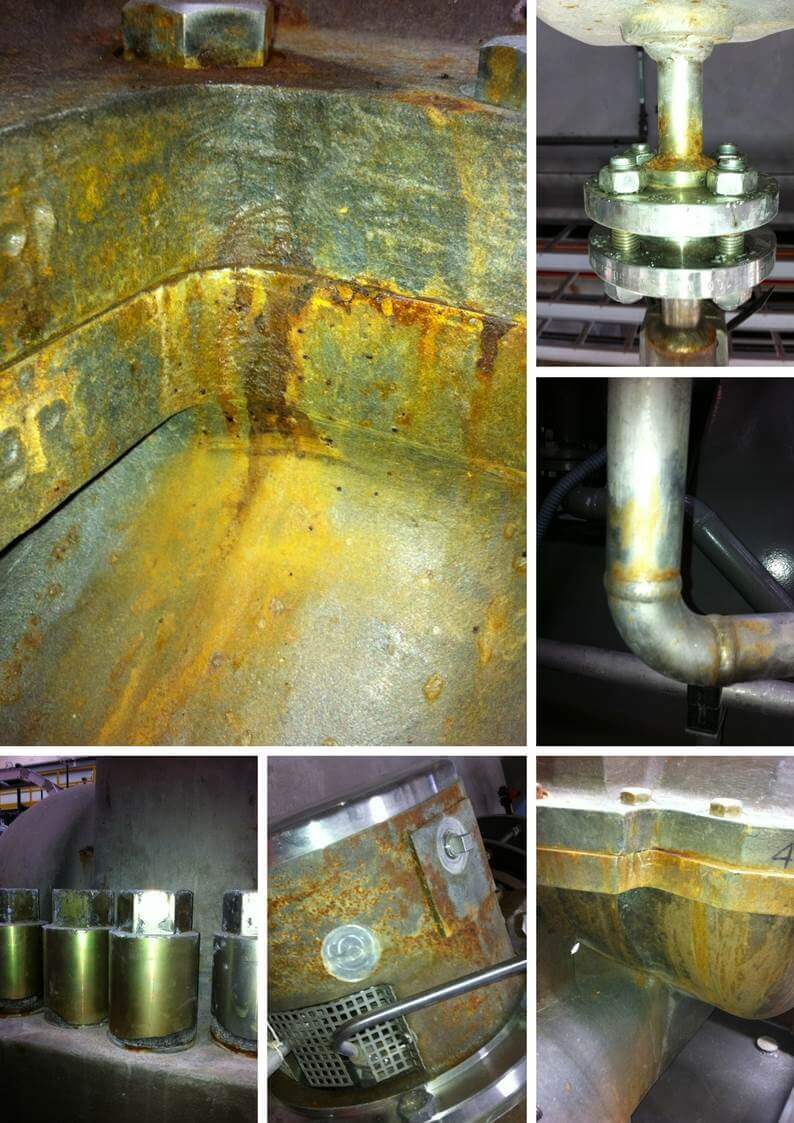The difference between pickling and not pickling your stainless steel
Our pickling and passivation bath is the largest and best of its kind in Australia. Our bath and process system ensure that all stainless steel is pickled and passivated in full compliance to the following standards:
- ASTM A380
- ASTM A967
- AS 1627.1
- AS 1627.5
Our premises have all the regulatory licenses and permits, enabling us to use hydrofluoric and nitric acid suitable for most commercial grades of stainless steel.
There is no doubt from the research and our vast experience that the best method to descale and remove heat affected zones including heat tint is an effective concentration of hydrofluoric acid. Many companies purport that their propriety mixes are just as effective but we have found that this is not the case. International Corrosion Services’ unique system relies on nitric or a similar oxidizer that is then used to passivate the stainless steel and reform the chromium oxide layer.
Pickled and Not Pickled
Stainless steel has an extremely thin chromium oxide layer, commonly called a ‘passive layer’. While this layer gives stainless steel the corrosion resistance it’s known for, after welding, the self-passivating features of stainless steel are destroyed. The damaged areas caused by welding, known as the heat affected zone, leave the stainless steel unable to reform the chromium oxide layer. This effect leaves your stainless steel susceptible to corrosion if left untreated.
Pickling using hydrofluoric acid removes this damaged layer of stainless steel post-welding. A fresh layer of untainted steel, allowing it to reform the chromium oxide layer and preventing corrosion.
Our pickle and passivation process ensures welds post-fabrication are treated both inside and out, restoring the stainless steel and allowing it to passivate. The treatment also cleans the surface of all oils, greases, dust and dirt, giving your stainless steel its best chance of withstanding corrosion.
Not treating your stainless steel can result in the corrosion as seen in these photos, showing just some of the damage that can be caused by not treating to standards ASTM A380 and A967:

Here is the result of stainless steel we treated using pickle and passivation, 18 months after completion:

To prevent problems and protect your stainless steel, contact us today to find out more about our pickle and passivation services.
 ICS will be closed for the Christmas and New Year period from 12pm, 22 Dec - 9 Jan 2023
ICS will be closed for the Christmas and New Year period from 12pm, 22 Dec - 9 Jan 2023
